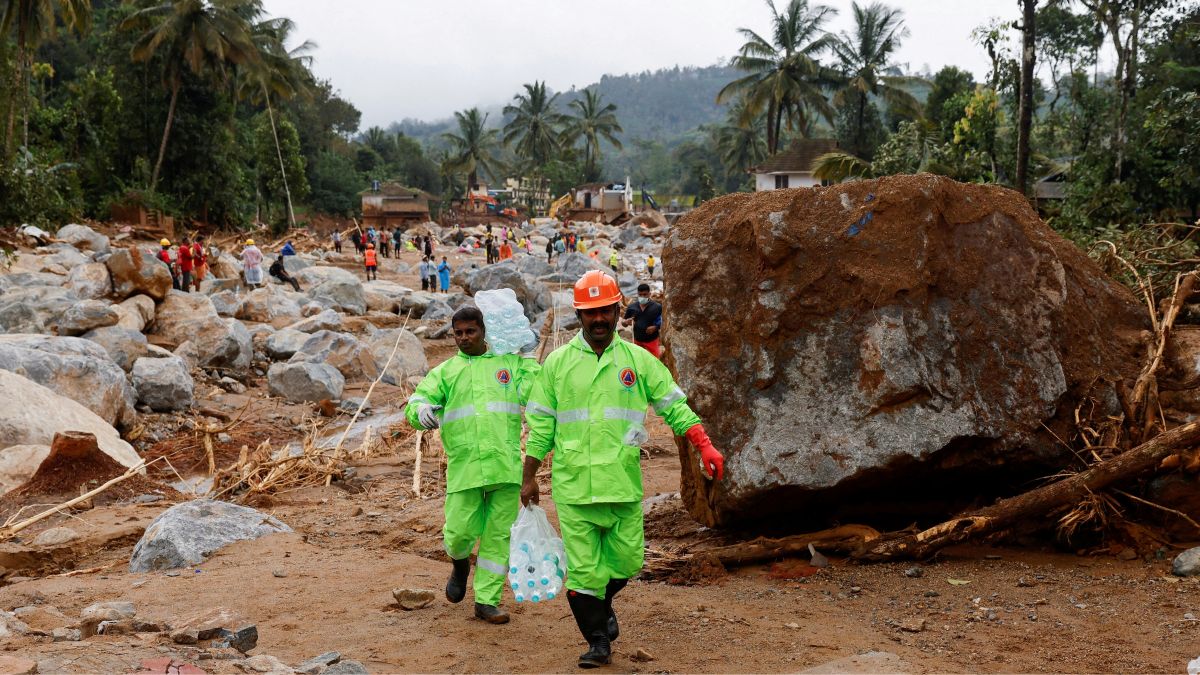Landslides in Kerala’s Wayanad district have taken over 250 lives, with hundreds of others injured and several still missing. Multiple landslips on Tuesday morning hit the hilly areas near Meppadi in the district, bringing death and destruction.
The landslides triggered torrents of mud and water sweeping through tea estates and villages in hilly areas, flattening houses and knocking down bridges. Efforts are underway to find the 240 people who remain missing.
As search and rescue operations continue, the Kerala Police has warned against ‘dark tourism’, urging people to refrain from visiting the disaster-hit spots for sightseeing. “Do not head to tragedy-hit spots for sightseeing. It will affect rescue operations. For help, please call 112,” it said in posts on Instagram and X.
ദയവായി കാഴ്ചകൾ കാണാൻ ദുരന്ത പ്രദേശങ്ങളിലേക്ക് പോകരുത്🙏🏻
— Kerala Police (@TheKeralaPolice) July 30, 2024
അത് രക്ഷാപ്രവർത്തനത്തെ ബാധിക്കും
സഹായങ്ങൾക്ക് 112 എന്ന നമ്പറിൽ വിളിക്കാം #keralapolice pic.twitter.com/D6irnQICNJ
What is dark tourism? What is the debate over it? We explain.
What’s dark tourism?
Dark tourism, or grief tourism, is travelling to places linked to death or tragedy. It entails visiting places where some of the darkest events of history have taken place, such as genocide, assassination, war, disaster and so on.
The term was coined in the 1990s, however, the phenomenon is much older.
Speaking to The Washington Post in 2019, J John Lennon, a professor of tourism in Scotland, said, “It’s not a new phenomenon. There’s evidence that dark tourism goes back to the Battle of Waterloo where people watched from their carriages the battle taking place.”
Impact Shorts
More ShortsHe said before that, crowds assembled to watch public hangings in London in the 16th Century.
Disaster tourism is a part of dark tourism which entails visiting sites of natural or accidental disaster.
Popular destinations for dark tourism include Auschwitz, Chernobyl, Hiroshima and the 9/11 Memorial in New York.
Why is dark tourism becoming popular?
There can be several reasons for the growing interest in dark tourism. One can be to get a better emotional understanding of the tragedy that unfolded at the site in the past.
A motivation to visit such sites can be for educational purposes. Another factor could be the curiosity to experience something new or different, breaking from the monotony of daily life.
Dark tourism is fascinating people because “when you’re part of a society that is by and large stable and you’ve gotten into an established routine, travel to these places leads you to sort of feel alive,” Dorina-Maria Buda, a professor of tourism studies at Nottingham Trent University, told New York Times (NYT).
“There is an inherent fascination with ruination,” Philip Stone, who runs the Institute for Dark Tourism Research, said to CNN.
“I think, for political reasons or cultural reasons, we are turning to the visitor economy to remember aspects of death and dying, disaster. There is a kind of memorial mania going on. You could call that growth in dark tourism,” Stone was quoted as saying by The Washington Post in 2019.
He said there is a “cultural fascination” with the darker side of history and “when we go to these places, we see not strangers, but often we see ourselves and perhaps what we might do in those circumstances.”
TV shows like Chernobyl and The Dark Tourist have also generated interest in dark tourism places.
In India, Port Blair’s Cellular Jail or ‘Kala Pani’ and Uttarakhand’s Roopkund Lake are some places associated with tragedy or suffering that attract tourists.
As per an _Onmanoram_a report, people often visit sites linked to accidents, tragedies or crimes in Kerala.
ALSO READ: Kerala, Delhi, Uttarakhand, Himachal: How rain fury is wreaking havoc across India
Debate over dark tourism
Dark tourism has raised questions about how ethical the practice is.
Smiling selfies of visitors at concentration camps had sparked an uproar on social media.
A Ukraine travel agency had faced flak after offering tours to civilian-hit places amid the ongoing war with Russia, as per World Crunch.
On the other side, there can be an upside to dark tourism as sites of tragedy or suffering offer great learning. Climate change is triggering more natural disasters that leave a trail of deaths and destruction.
“The visual impact of climate change-induced landscapes serves as a warning of our industrialisation,” Stone of the University of Central Lancashire told CNN last year. “Visiting such places now can shine a critical light on the effects of climate change and, in so doing, offer educational experiences to the contemporary visitor.”
Dark-tourism.com, a website dedicated to the phenomenon, warns against “voyeurism” of an ongoing or recent tragedy. “What is endorsed here is respectful and enlightened touristic engagement with contemporary history and its dark sites/sides in a sober, educational and non-sensationalist manner.”
With inputs from agencies


)

)
)
)
)
)
)
)
)



